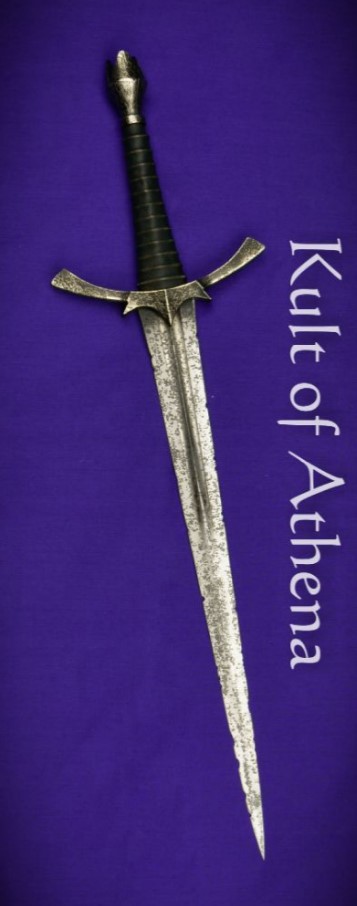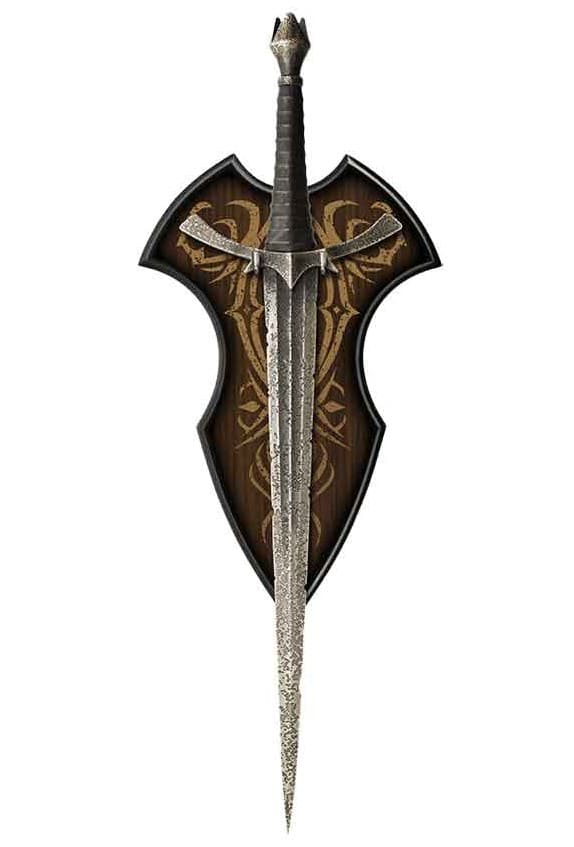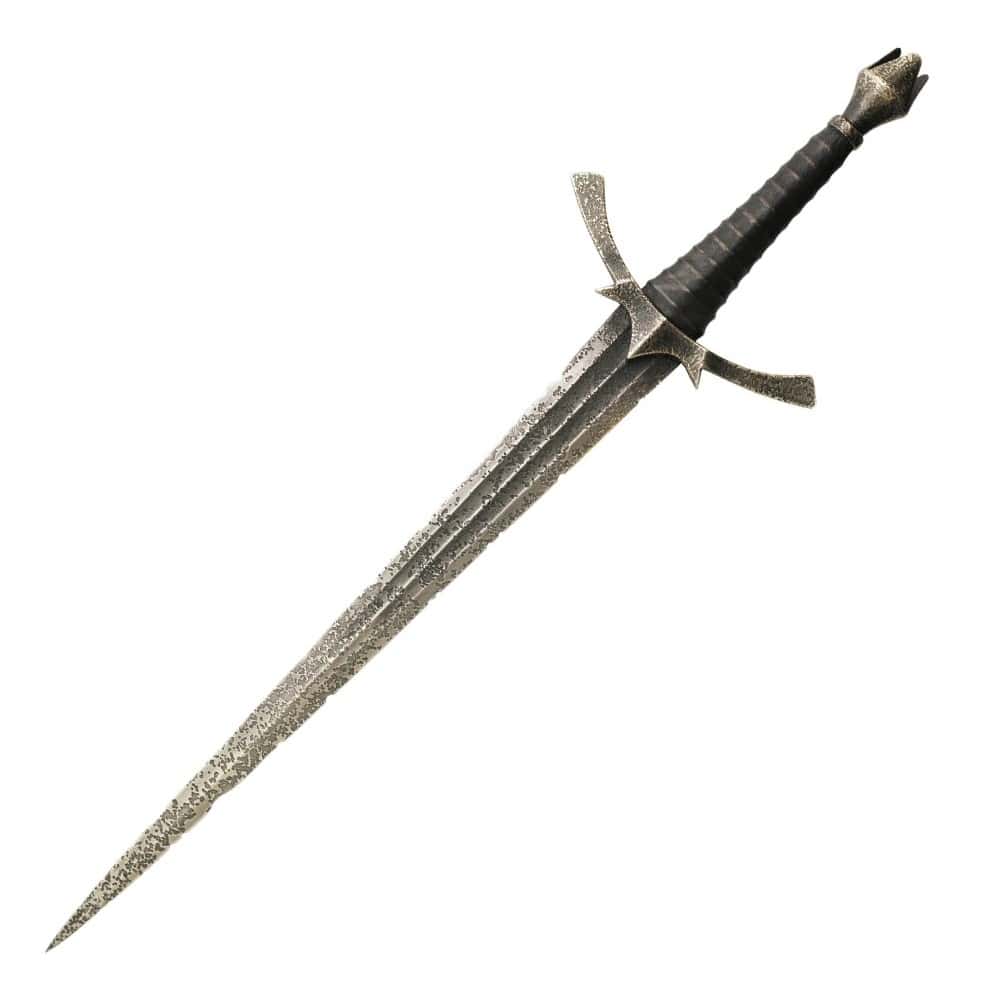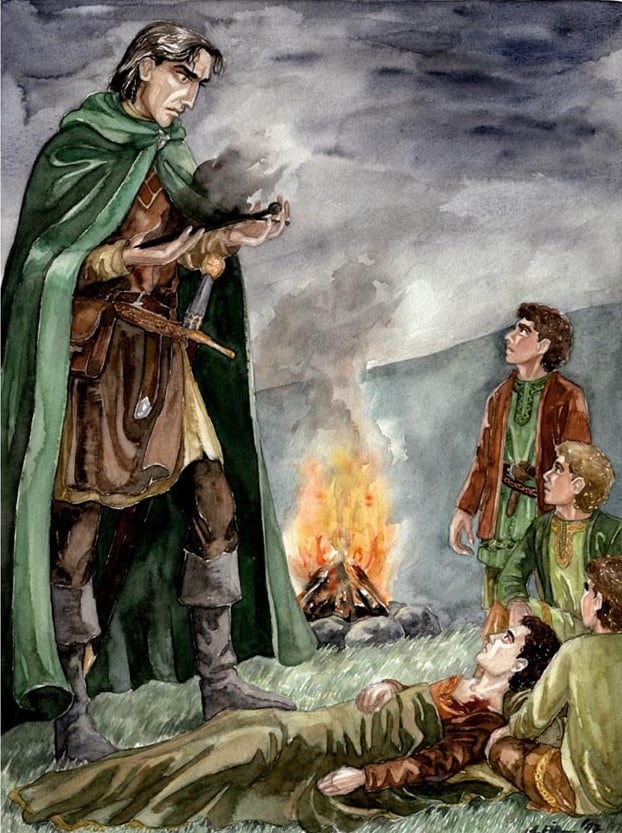Morgul Blade: A Haunting Weapon of the Nazgûl
In the shadowy realm of Middle-earth, where darkness and evil loom, certain artifacts hold a sinister aura that chills the hearts of those who dare to confront them. Among these malevolent relics, the Morgul blade stands as a haunting symbol of the power of the Nazgûl, the Ringwraiths serving the dark lord Sauron.
With its history steeped in darkness and its maleficent purpose etched in its every curve, the Morgul blade is a weapon that strikes fear into the hearts of both the characters in J.R.R. Tolkien’s epic fantasy and the readers who journey through his enchanting yet perilous world.
What is the Morgul blade?
In the ominous realm of J.R.R. Tolkien’s Middle-earth, the Morgul blade demonstrates the darkness and malevolence that seeped through every crevice of the land. Crafted with sinister intent and wielded by the Witch-king of Angmar, leader of the Ringwraiths, this short but deadly blade has left an indelible mark on the history of the Third Age.
Forged with a nefarious purpose, the Morgul blade was a tool of terror in the hands of the Nazgûl. Described alternately as a long knife or a blade, its design matched its sinister purpose.
The Witch-king employed this maleficent weapon to poison his enemies, leaving them with a shard of the blade embedded within their bodies. This shard, as explained by Elrond, would eventually work its way to the victim’s heart, transforming them into wraiths – spectral and cursed beings forever bound to the will of Sauron.
The true horror of the Morgul blade is unveiled in its most infamous act – the stabbing of Frodo Baggins. On that fateful night atop the ancient Tower of Amon Sûl, the Witch-king wielded the blade against Frodo and forever changed the course of his destiny. The blade shattered upon impact, leaving a fragment embedded within Frodo’s body. Thus, the seed of darkness was planted, threatening to transform the brave hobbit into a wraith under Sauron’s dominion.
In the hands of the Witch-king, the Morgul blade became a symbol of dread, a weapon that carried not only physical but also spiritual corruption. The darkness of the blade’s intent was matched only by its unholy power. Yet, even in the face of such malevolent might, there existed remedies that could slow its poisonous effects.
Athelas, also known as Kingsfoil, possessed the ability to counteract the Morgul blade’s curse, acting as a respite for those afflicted by its venomous touch. However, true healing remained a rarity, and the victim’s fate teetered between life and becoming a wraith.
The Morgul blade, with its shrouded history and deadly purpose, embodies the maleficent legacy of the Nazgûl. It stands as a harrowing reminder of the evil that once walked Middle-earth and the struggles of those who faced it. Within the pages of Tolkien’s epic, this weapon carries not only the power to wound the body but also to corrupt the soul.
What does the Morgul blade do?
In the shadows of Middle-earth, where malevolent forces sought dominion over all that is pure, the Morgul blade emerged as a weapon both insidious and potent. Infused with dark magic and wielded by the Nazgûl, this blade held the power to turn life into wretched undeath, to transform a soul into a puppet of Sauron’s will.
Crafted with an aura of malevolence, the Morgul blade embodied a curse far beyond the physical. When thrust into the flesh of its victim, the blade possessed an unholy ability to remain lodged within the wound, serving as an anchor to draw the victim into a shadowy abyss.
As a shard of the blade inexorably worked its way toward the heart, a grim fate awaited – the transformation into a wraith, bound to the commands of the Nazgûl and enslaved by the dark will of Sauron himself.
The maleficent nature of the Morgul blade was starkly revealed on that ill-fated night of 6 October T.A. 3018, when Frodo Baggins encountered the Lord of the Nazgûl atop Weathertop.
With an aura of pale light, the blade’s malevolence glowed ominously, bearing an insidious inscription that only those untouched by mortal limitation could discern. The Morgul blade was driven into Frodo’s body, its point shattering upon impact, leaving a fragment behind that sought to poison his very essence.
The terror of the Morgul blade’s curse extended beyond physical agony. As the shard remained within Frodo, a creeping chill of darkness began to overshadow his being, threatening to extinguish his spirit and leave only a wraith-like shell in its wake. Though Athelas, the healing herb known as Kingsfoil, could slow the venomous progress, it offered only a temporary respite against the inexorable march of the blade’s malevolence.
With the guidance of allies like Aragorn and Glorfindel, the power of the Morgul blade was confronted. Glorfindel, in particular, touched the blade’s hilt, shuddering at the palpable evil emanating from it. Despite the limits of Elven healing, Frodo’s spirit was granted a reprieve, as the chilling grasp of the blade lessened, and a semblance of warmth and light returned to his world.
Ultimately, the final salvation came in the hands of Elrond, whose wisdom transcended mortal understanding. On the eve of 24 October T.A. 3018, the shard of the Morgul blade was located and removed, and the wounds began to heal, both physical and spiritual. Yet, the shadow of the blade’s curse lingered, casting a pall over Frodo’s well-being in the years that followed.
The Morgul blade’s legacy, embodied by the struggles and sacrifices of Frodo Baggins, serves as a harrowing reminder of the dark powers that sought dominion over Middle-earth. Its malevolent purpose, its venomous power, and its insidious transformation etch it into the annals of the Third Age. In the end, it is Frodo’s journey toward healing and redemption that reflects the enduring strength of the free peoples of Middle-earth.
How serious are wounds from the Morgul blade?
Morgul wounds, inflicted by the Nazgûl’s dark-enchanted weapons, bore a curse that varied in severity. Steward Boromir’s wound in T.A. 2475 caused crippling pain and hastened his demise in 2489.
Frodo’s Weathertop wound in 3018 threatened to turn him into a wraith. Faramir’s apparent Morgul wound during the War of the Ring proved false, later confirmed by Aragorn’s examination. The wounds’ seriousness ranged from enduring agony to the looming specter of wraithdom.
Where can I get my own Morgul blade?
Kult of Athena
Morgul Blade of the Nazgul

Features:
- Authentic Reproduction: A true-to-original filming prop replica, capturing the essence of the Morgul blade from the movies.
- Distressed Design: Aged and battle-worn appearance with an acid-etched finish, mirroring the original prop’s weathered look.
- Detailed Craftsmanship: Solid metal hilt parts, leather-wrapped grip, and stainless steel blade for a highly detailed and realistic replica.
- Impressive Size: 25 1/8″ overall length, featuring a 17 1/2″ blade, creating a striking display piece.
- Presentation Package: Includes a wooden wall display with Witch-King crown motif, mounting hardware, and a certificate of authenticity, enhancing its collectible appeal.
Medieval Collectibles
Morgul Blade of the Nazgul

Features:
- Decorative Display: The Morgul Blade is a completely decorative piece, perfect for collectors and fans of The Hobbit film series.
- Officially Licensed: It is an officially licensed reproduction of The Hobbit, ensuring authenticity and attention to detail.
- Aged Stainless Steel Blade: Crafted from AUS-6 stainless steel, the blade is authentically aged and battle-worn with a distressed acid wash finish.
- Intricate Design: The hilt features solid-metal parts for the guard and pommel, and it includes royal touches like the crown of the Witch-King.
- Comes with Display Plaque: This collectible Morgul Blade includes a wooden display plaque for showcasing its sinister elegance, making it an excellent gift choice.
Conclusion
As the echoes of Middle-earth’s tales fade into the annals of literature, the Morgul blade remains an indelible mark of the Nazgûl’s terrifying presence. With its haunting design, malevolent purpose, and insidious magic, this blade continues to captivate our imaginations, reminding us of the perilous battles fought against the forces of darkness.
It stands as a testament to J.R.R. Tolkien’s masterful ability to craft objects that transcend the pages they inhabit, leaving a chilling legacy that will forever be etched in the lore of Middle-earth.


